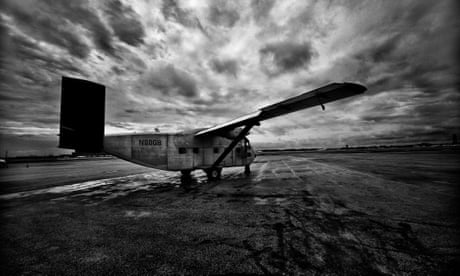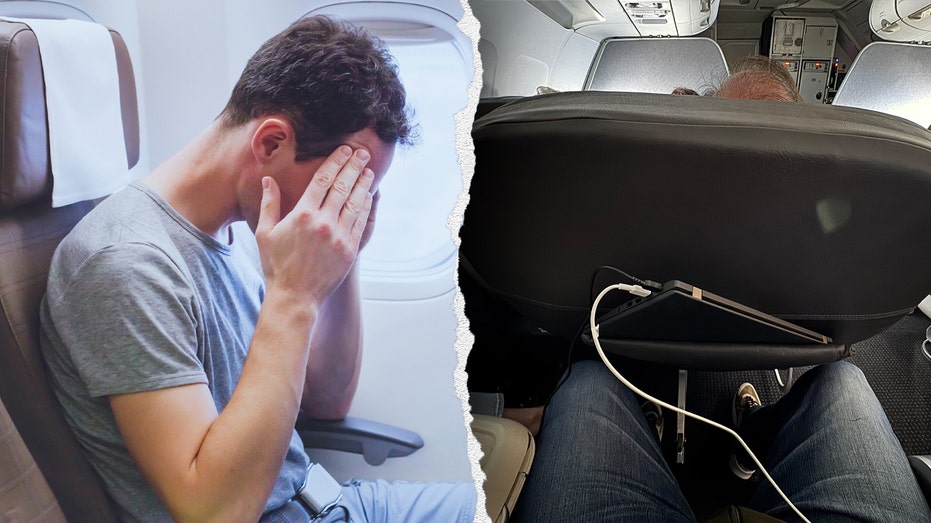- by foxnews
- 15 Nov 2024
‘No one can deny it now’: death flight plane to be returned to Argentina
‘No one can deny it now’: death flight plane to be returned to Argentina
- by theguardian
- 25 Mar 2023
- in news

On the night of 14 December 1977, the three pilots flew their turboprop aeroplane for more than an hour out over the Atlantic Ocean. The technical log they had completed on takeoff registered no passengers, but that was a lie: on the cabin floor behind them lay eight women and four men, tortured, drugged and barely conscious.
Two of the flight crew stripped the victims naked and opened the ramp door at the rear of the plane. Then they pushed their victims out, to fall thousands of feet into the South Atlantic.
Though such "death flights" by which thousands perished were routine during Argentina's 1976-83 military dictatorship, many of their details remain unknown.After an astounding series of events, however, not only have the pilots of this particular flight been identified and convicted, but the plane itself, a Belfast-built Short SC.7 Skyvan, has been located in the US and will soon be returned to Argentina, where it will be put on display in Buenos Aires at the Museum of Memory set up in the former Argentinian military death camp that it once served.
Cecilia De Vincenti, whose mother, Azucena Villaflor, perished on the flight, said the plane's return will provide concrete proof against Argentina's rising tide of dictatorship denialism.
"It will render history tangible: they were alive until 14 December, when they were thrown from this plane, and no one will be able to deny that now," she said.
Unlike Brazil and Uruguay, where wide-ranging amnesties were passed for crimes committed during their dictatorships, Argentina has tried and convicted about 1,000 former military officers for human rights abuses under military rule. But that consensus shattered under former president Mauricio Macri, who may run again in this year's elections - and who this week dismissed the issue as "the human rights scam of what happened 40 years ago".
It is hoped the plane will return to Argentina by 30 April, the anniversary of the first time the Mothers of Plaza de Mayo marched in front of the presidential palace in 1977, demanding news of their children who had been forcibly disappeared by state forces.
The 12 people thrown from the Skyvan on the night of 14 December belonged to the Group of the Church of the Holy Cross, named after the Irish community church where they met. They included three members of the Mothers of Plaza de Mayo, including Villaflor, three other relatives of missing people, two French nuns and four young activists who helped the relatives in their search for their loved ones.
I knew most of them because they came regularly to the Buenos Aires Herald, an English-language daily where I worked that was one of the few outlets to report on the disappearances. After we published their stories, the activists tried to persuade me to join their group, and the Mothers sometimes returned if only to hold my hand in silence for 15 minutes.
Two were taken from the Comet bar near the Herald offices where we had been scheduled to meet on 8 December. Had I been at the table that day I might also have ended up tumbling from that Skyvan.The aircraft used for that flight was located thanks to a tireless search by death camp survivor Miriam Lewin and an Italian photographer, Giancarlo Ceraudo, who grew up with a fascination for airplanes. When he first visited Argentina as a tourist 20 years ago, Ceraudo became obsessed with the "death flight" planes. "I went around asking everybody, 'But where are the actual planes?' Nobody would listen to me," he said in a phone call from Rome. Ceraudo met Lewin, who became a leading investigative journalist after the dictatorship, and asked the same question. "At first I turned him away because I didn't want to look back into that past, but soon I realised it was important to find those planes," Lewin said.
Five Skyvans were believed to have been used in the death flights: two were shot down during the Falklands/Malvinas war with the UK; the three others were sold, of which only one, PA-51, survives.
"Then the plane was found in Florida, with the original flight logs intact. These two elements allowed us to convict not only the kidnappers but the pilots as well for murder. I'm an atheist, but I can't help thinking this is nothing short of miraculous," she said.Skyvan PA-51 still has a long journey to complete. It is currently at the Marana regional airport near Tucson, Arizona. A short-range aircraft, it will have to make about eight or nine stops on its way to Argentina.In Buenos Aires, three women will be waiting for it with mixed emotions. "When I first saw the plane in Fort Lauderdale in 2014 I wasn't able to go onboard. I could have died on that plane myself and many people I knew died on it. I don't know how I will react now," said Lewin."When I see photos of the cabin I can't help but imagine my mother in there," said Careaga. "But I still think it has to be on display at the [death camp] museum because it is part of history now.""It has to do with love," said De Vincenti. "My mother went out to look for my brother putting her own life at risk; she transformed her pain into love. She did that under a dictatorship. If I can't do it during a democracy, that would make me a coward."
- by foxnews
- descember 09, 2016
Airline passenger shares photo of 'reclined' seat debacle: 'Dude is in my lap'
A passenger paid for a first-class ticket on an American Airlines flight, but the seat in front of him trapped him in his chair, which led to the airline posting a public apology on X.
read more


